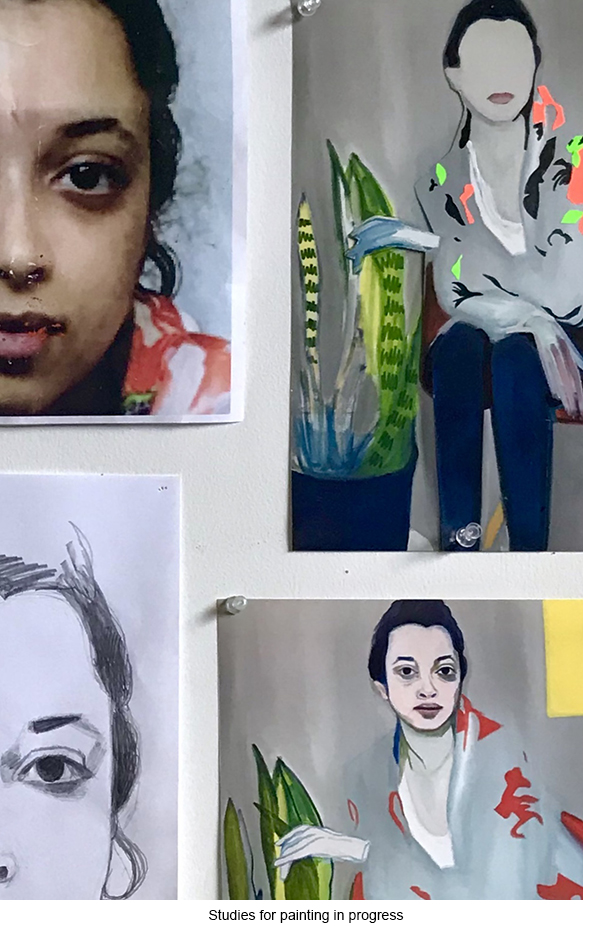
Sarah Fisher: The Second Yes |
Photography plays a key role in Sarah Fisher’s painting process. She initiates most portraits by photographing her subjects, but these sessions yield far more than reference photos. Every photo shoot is a unique relational experience that permeates the eventual painting. The digital and printed matter serve as reference material, but take on lives of their own functioning like studies, or way-finders in her journey. Often they resolve themselves as finished works.
This exhibition was born out of a casual chat with the artist about her work.
The Q&A here expands on this conversation.
 How do you decide on the subject of a portrait?
How do you decide on the subject of a portrait?
I get a really deep feeling when I meet certain people, and I have to act on it. It’s difficult to articulate, but I can say this — this feeling is joy, and it’s intense.
What does “The Second Yes” mean?
My subjects say yes to being painted (the first yes) and also to being photographed (the second yes). Through the ages, artists have created portraits from life, drawing and painting their subjects in real time in studio or on location. I prefer to work from photography.
There is an inter-relational component to your work. Have you always involved your subjects in this way?
How did it come about?
My portraits are collaborations. I believe people who have the courage to be photographed and painted know how they want to be seen. I hope giving them the freedom to control the creative aspects of the shoot helps draw out that confidence once it’s time for them to look at the camera. I simply want to honor and respect the people who sit for me. I also treasure the surprises that pop up when we work together without the pressure of preconceived ideas.
When we first started talking about doing a show together, it started with a conversation about the photo work you do as part of your process. You have talked about the significance of your photo shoots, but the medium itself seems just as important. You incorporate the printed photos into your working process very directly.
How does this happen?
The medium itself is baked right in from start to finish. From the day I grid a canvas for a new painting until I finish it, I document my process on my phone. Looking at my work in that smaller scale, in the moment — while I’m working — gives me a different and very helpful vantage point. Sometimes I email the photos to myself and print them out when exploring composition, line, color, and abstraction decisions. I enjoy working through these questions by physically coloring on the photograph with marker and even white-out. I sometimes cut out and apply colored stickers from my mixed-media work. Other times I cut, rearrange and staple or tape parts of the painting together in new configurations. I worked as a graphic designer back in the 1990s, when we made key lines by hand, so that’s probably why I’d rather get my hands on these materials and manipulate them in this way. And at some point, I realized that I was actually creating new little works of art along the way, which was kind of fun also.
You have multiple creative endeavors going on in your studio at one time. Do things overlap in obvious or subtle ways? Is there cross fertilization?
I love to paint and draw but when I began branching out into mixed-media in early 2018, I felt like a “whole artist” for the first time. It was freeing. Working on several projects at once helps me stay fresh. I buzz from process to process, applying things I learn on one piece to another in a different medium, so there is some interesting cross-fertilization. There are also strong through-lines — palette, photography and my love of experimentation. Case in point: I just bought a little printmaking press and have no idea how to use it. I look forward to seeing what kind of magic this new experiment may yield.